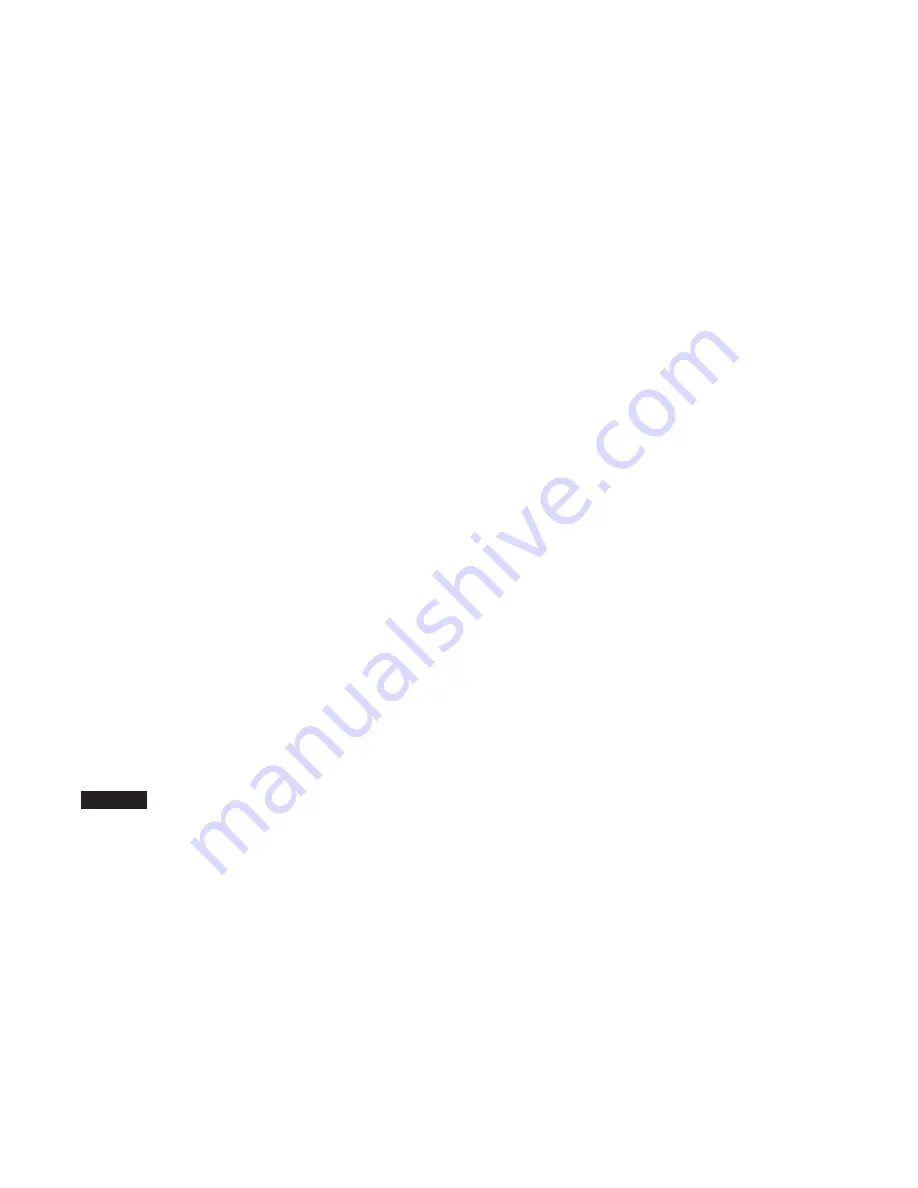
TFP443
Page 5 of 6
Installation
The TYCO RAPID RESPONSE Series
LFII Residential Flat-Plate Concealed
Pendent Sprinklers must be installed in
accordance with this section:
General Instructions
Damage to the Solder Link Element dur-
ing installation can be avoided by han-
dling the sprinkler by the Support Cup
only; that is, do not apply pressure to the
Solder Link Element (Figure 1).
A leak-tight 1/2 inch NPT sprinkler joint
should be obtained by applying a min-
imum-to-maximum torque of 7 to 14
ft.-lbs. (9,5 to 19,0 Nm). Higher levels
of torque can distort the sprinkler inlet
with consequent leakage or impairment
of the sprinkler.
Do not attempt to compensate for insuf-
ficient adjustment in the Cover Plate/
Retainer Assembly by under- or over-
tightening the sprinkler. Re-adjust the
position of the sprinkler fitting to suit.
Step 1.
Install pendent sprinklers in
the pendent position, with the center-
line of the sprinkler perpendicular to the
mounting surface.
Step 2.
Remove the Protective Cap.
Step 3.
With pipe-thread sealant ap-
plied to the pipe threads, and using the
W-Type 18 Wrench shown in Figure 2,
install and tighten the Sprinkler/Sup-
port Cup Assembly into the fitting. The
W-Type 18 Wrench accepts a 1/2 inch
ratchet drive.
Step 4.
Replace the Protective Cap by
pushing it upwards until it bottoms out
against the Support Cup. The Protec-
tive Cap helps prevent damage to the
Deflector and Guide Pins during ceiling
installation and/or during application of
the finish coating of the ceiling.
NOTICE
As long as the protective Cap remains
in place, the system is considered “Out
Of Service”.
Step 5.
After the ceiling has been com-
pleted with the 2-1/2 inch (63 mm) diam-
eter hole and in preparation for install-
ing the Cover Plate/Retainer Assembly,
remove and discard the Protective Cap,
and verify that the Deflector moves up
and down freely.
If the sprinkler has been damaged and
the deflector does not move up and
down freely, replace the entire sprinkler
assembly. Do not attempt to modify or
repair a damaged sprinkler.
Step 6.
Screw on the Cover Plate/Re-
tainer Assembly until its flange contacts
the ceiling. Do not continue to screw
on the Cover Plate/Retainer Assembly
such that it lifts a ceiling panel out of
its normal position.
If the Cover Plate/Retainer Assembly
cannot be engaged with the Mounting
Cup or the Cover Plate/Retainer Assem-
bly cannot be engaged sufficiently to
contact the ceiling, the Sprinkler Fitting
must be repositioned.
Care and
Maintenance
The TYCO RAPID RESPONSE
Series
LFII Residential Flat-Plate Concealed
Pendent Sprinkler (TY2524) must be
maintained and serviced in accordance
with ths section:
Before closing a fire protection system
main control valve for maintenance work
on the fire protection system that it con-
trols, obtain permission to shut down the
affected fire protection system from the
proper authorities and notify all person-
nel who may be affected by this action.
Absence of a Cover Plate may delay the
sprinkler operation in a fire situation.
The owner must assure that the sprin-
klers are not used for hanging any ob-
jects and that the sprinklers are only
cleaned by means of gently dusting with
a feather duster; otherwise, non-opera-
tion in the event of a fire or inadvertent
operation may result.
When properly installed, there is a nomi-
nal 1/8 inch (3,2 mm) air gap between
the lip of the Cover Plate and the ceil-
ing, as shown in Figure 3. This air gap
is necessary for proper operation of the
sprinkler by allowing heat flow from a
fire to pass below and above the Cover
Plate to help assure appropriate release
of the Cover Plate in a fire situation. If the
ceiling needs repainting after sprinkler
installation, exercise care to ensure that
the new paint does not seal off any of
the air gap. Failure to do so may impair
sprinkler operation.
Factory painted Cover Plates must not
be repainted. They should be replaced,
if necessary, by factory painted units.
Non-factory applied paint may adversely
delay or prevent sprinkler operation in
the event of a fire.
Do not pull the Cover Plate relative to the
Retainer. Separation may result.
Sprinklers which are found to be leaking
or exhibiting visible signs of corrosion
must be replaced.
Automatic sprinklers must never be
painted, plated, coated, or otherwise
altered after leaving the factory. Modi-
fied or overheated sprinklers must be
replaced.
Care must be exercised to avoid dam-
age to the sprinklers - before, during,
and after installation. Sprinklers dam-
aged by dropping, striking, wrench twist/
slippage, or the like, must be replaced.
The owner is responsible for the in-
spection, testing, and maintenance of
their fire protection system and devices
in compliance with this document, as
well as with the applicable standards of
the National Fire Protection Association
(e.g., NFPA 25), in addition to the stan-
dards of any other authorities having ju-
risdiction. Contact the installing contrac-
tor or sprinkler manufacturer regarding
any questions.
Automatic sprinkler systems are rec-
ommended to be inspected, tested,
and maintained by a qualified Inspec-
tion Service in accordance with local
requirements and/or national codes.



















